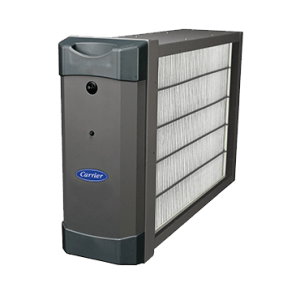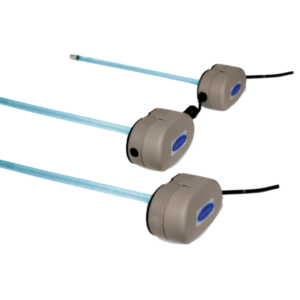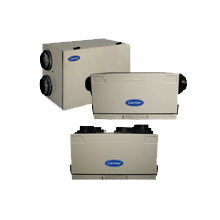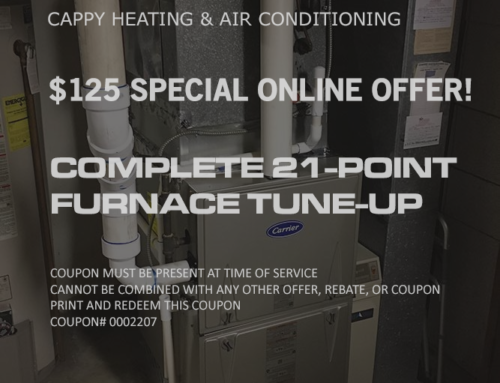In the article The Reason Why Flu Strikes in Winter, Harvard.edu says “we can conclude that, at least in regions that have a winter season, the influenza virus survives longer in cold, dry air”… “At 43°F with very low humidity, most of the virus was able to survive more than 23 hours, whereas at high humidity and a temperature of 90°F, survival was diminished at even one hour.”
1) Humidifiers
Humidity levels need to remain constant throughout the whole dwelling (or workplace) as humidity does not travel as well as one might think from room to room. Thus having a good quality whole house stand alone humidifier is important if going that route.
Some portable do not have the capacity to measure the humidity level on a whole building basis, thus another measuring unit would be needed to determine the humidity level for portable units, then the units would need to be adjusted manually.
It’s important to change the humidifier filters regularly as like any filter, the healthy properties are connected to the cleanliness of the filter.
2) HEPA Filters
HEPA filters have been used since the 1940s starting in military biomedical applications to prevent the spread of viral organisms and airborne bacteria. CNN suggests in their anti-viral article “Look for a model with a HEPA filter, which is what most allergists and doctors recommend.”
HEPA filters down to 0.3 microns and is 99.97% effective with a fresh filter, and traps pathogens, bacteria, many viruses (98% according to MIT including flu), mold spores, dust, allergens, smoke and odors and more. Silver infused HEPA filters, as silver has natural antibacterial, antiviral and anti-fungal properties.
Silver nanoparticles make contact with the outer membrane of the pathogens and create structural changes that degrade the microbe, which ceases the reproduction of germs.
Since bacteria and viruses can be airborne, it’s almost impossible to keep from breathing in germs that are floating around in the air. Air filtration is commonly used in both residential and small and large commercial applications such as office buildings, schools, large apartment buildings, medical and public buildings.
According to the Environmental Protection Agency, the most effective way to improve indoor air or remove or at least reduce the sources of pollutants inside the dwelling is to ventilate with clean outdoor air.
Next, EPA recommends is using a whole building filtration system where possible (over a portable unit) such as air purifiers and air sanitizers to improve indoor air quality.
4) Additional Air Purifying Options
Many Commercial and Residential spaces utilize dual systems in tandem, for greater efficacy adding UV technology in tandem with the HEPA system, depending on the application (such as medical building or daycare) as some viruses can be smaller than .3 microns. SARS for example was 0.1 microns. However, having said that, airborne viruses are generally attached to water molecules, which make the whole package much larger than .3 microns, and therefore could be picked up by a HEPA filter.
Germicidal UV technology oxidizes odours and vapours by removing them instead of trapping them and is effective on microscopic particles, bacteria and viruses as well as small as .001 microns. Not just the aforementioned, but also herbicides and atmospheric dust.
Air Exchangers too, are of great importance, buildings like humans need to breathe. An air exchanger brings in fresh air from outside and exhaust out the stale air from inside, as the Environmental Protection agency suggests above. Thus diluting the stale air with fresh air, and getting rid of airborne nastiness as an extra measure.
Heat Sterilization & HVAC Incinerators – Going the Extra Mile
One thing a virus, as noted above, cannot escape, is extreme heat. “Generally, as temperature rises, virus survival decreases. Maintaining temperatures above 60°C (140°F) for more than 60 min,” says Dr Memarzadeh.”
This is an add-on unit to the HVAC system. Air gets pulled through a chamber and microorganism are incinerated by the heat, in which no particles of any kind can survive. This more extreme method of air purification also burns up allergens, dust, mold spores, dander and pretty much everything else. The air is cooled before released back into the living/work space.
5) Dust, Vacuum & Disinfect Surfaces
CNN as well as Most Medical sites suggest disinfecting surfaces with a product effective against viruses. Duct work has surfaces too, and the air in the home regenerates through the duct work approximately 60x’s per day. Benefect is a 100% natural medical approved grade disinfectant that can be used as a treatment after duct cleaning. This will add extra protection to the air quality in residential or commercial property.
Conclusion
Again, there are other measures of controlling the indoor air quality such as UV lights, heat sterilization units & HVAC incinerators, air purifiers, fresh air exchangers and more. There are lots of options to choose from, which will work well to destroy germs, mold and pathogens, thus choose the one or a combination of systems that best suits your needs, space size and application (residential and commercial) as well as budget.





